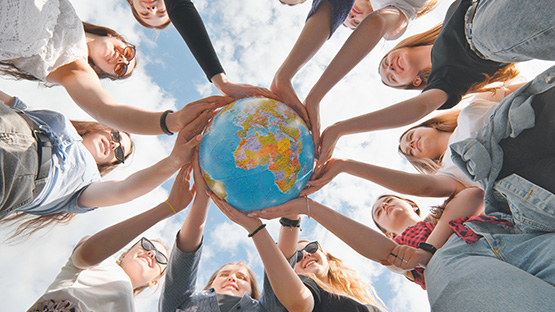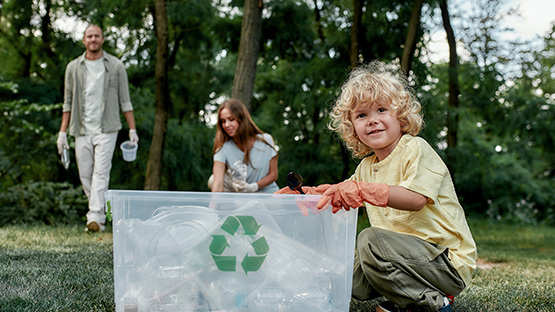Global warming - facts and myths of the phenomenon
Ekologia

28 January 2023
Progressive climate change resulting from global warming is a serious threat to life on Earth. Unfortunately, humans are responsible for the increased and progressive rise in the average temperature of the planet. How can we limit global warming?
Global warming - where does it come from?
Global warming is defined as an increase in the Earth's average temperature. It is caused by an increase in the greenhouse effect, which is the most common doubt of those who reproduce the myths about global warming of the Earth. Why is this happening? The greenhouse effect itself is a natural phenomenon involving an increase in the temperature of a planet. This is due to greenhouse gases that are present in the atmosphere. Moreover, its occurrence is a necessary factor for life to arise on Earth.
The phenomenon ceases to be beneficial to the planet when it is exacerbated. In turn, the deepening of the greenhouse effect is greatly influenced by human activity, including the burning of fossil fuels, the indiscriminate use of Freon in earlier years and highly developed industry or transport. When there are too many greenhouse gases such as carbon dioxide or methane in the Earth's atmosphere, the greenhouse effect worsens. This causes the planet's surface to heat up and the prevailing temperature to increase, resulting in global warming effects such as melting glaciers and frequent weather anomalies.
Is global warming accelerating?
On the question of whether global warming exists, there should no longer be any doubt, since its effects are already visible to the naked eye. The second issue is whether the dangerous phenomenon is accelerating? Unfortunately yes, and immediate action is needed to stop this progressive process. Scientists estimate that the Earth's average temperature could already rise within the next 20 years.
Thanks to the scientific output and numerous studies and analyses, concrete conclusions can already be drawn. In order to avert catastrophe, it is necessary to reduce greenhouse gas emissions by 50% by 2030 and to completely offset their production by 2050. Otherwise, global climate warming will lead to drastic changes that will directly threaten human health and life on Earth. 
How can global warming be tackled?
The fight against global warming is about reducing carbon dioxide emissions that enter the atmosphere through the burning of fossil fuels. There is no doubt that the key to this are the decisions of individual countries and major corporations and factories, as well as environmental institutions.
However, this does not mean that the position of individuals does not matter. How can global warming be prevented? It is very important that as many households as possible switch from traditional heating to renewable energy sources as a countermeasure. These include biomass, geothermal and wind power plants.
Another way of combating global warming is to reduce your carbon footprint through everyday habits such as turning off the lights when you leave the room, using energy-efficient light bulbs or giving up travelling by car in favour of public transport or cycling. In fact, even such small habits applied by many people can make a positive difference to the global climate situation.
How to prevent global warming in other areas of life? Choose the services of companies that use green solutions and promote the idea of sustainable development. A great example is InPost, which, thanks to its Paczkomat machine deliveries, reduces carbon dioxide emissions by up to 75% compared to delivering parcels directly to customers' homes.
Can global warming be stopped?
As has already been mentioned, stopping the catastrophic effects and minimising the risks of global warming are only possible under a strict condition. Greenhouse gas emissions must be reduced as much as possible in the near future and then reduced to zero. This is to limit the increase in the Earth's temperature to a maximum of 1.5 degrees C compared to the pre-industrial era.
We are primarily talking about reducing carbon dioxide emissions and removing it from the atmosphere, thus minimising its concentration. For this to be possible, all industries must base their production processes on alternative energy sources other than the combustion of fossil fuels. The same also applies to households that use coal for heating.
Another issue is the changes in agriculture and forestry, which include the reduction of cattle breeding and the broader protection of ecosystems. It is important to remember that the production of meat and livestock products is responsible for a significant proportion of human greenhouse gas emissions.
How to stop global warming? The harmful consequences of companies in the area are due to the huge demand for meat. It is therefore worth reducing its daily consumption as much as possible. If not, the world is threatened by the consequences of global warming. Antarctica, and more specifically the melting of its glaciers, will contribute to rising sea levels. This, in turn, will lead to dangers such as floods, hurricanes and soil pollution.
Global warming - how does it affect climate change?
Countless scientists have presented a wealth of evidence on global warming and there is no longer any doubt that it is a serious, life-threatening problem on Earth. Often the terms global warming and climate change are used interchangeably, and although the two phenomena are directly related, the terms are not the same.
However, global warming consists of a progressive increase in the average surface temperature of the planet. Climate change, in turn, refers not only to an increase in average global temperature, but also to any, increasingly frequent, weather anomalies.
It can be said that global warming is one of the consequences of climate change. We are already seeing the consequences of this phenomenon, such as fires, droughts and increased precipitation, which will get worse without taking the necessary measures.
What else is affected by climate change and global warming? Glaciers that are melting due to increased average temperatures are not only contributing to rising water levels. The phenomenon also results in a loss of habitat for many animal species. Some of them have to move to other areas in order to survive. This can disrupt the order of the food chain.
Progressive climate change therefore also affects flora and fauna. The part of animal and plant species that cannot adapt on an ongoing basis to the ongoing transformations is threatened with extinction.
However, the negative effects do not only affect the environment, but also social life. Extreme high temperatures can cause an increase in mortality during the summer season. In turn, extreme weather events contribute to a higher frequency of accidents. Examples are the effects of floods, fires and intense storms, which can result in many people losing their possessions.
Climate change resulting from greenhouse gas emissions due to human activity is already frightening. Every individual should therefore feel responsible for taking up the fight against increasing global warming.
Czytaj również

Where to donate your clothes? Give them a second life together with InPost!
Where to donate clothes you no longer wear? Instead of throwing away good clothes, it is worth donating them to others for further use. Do...

Where to donate toys you no longer need? We have a good way to do it!
Quite a few children have rooms full of toys. They receive more gadgets from grandparents, parents or aunts and uncles. Sometimes the obje...




